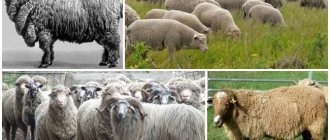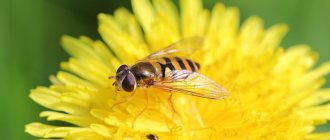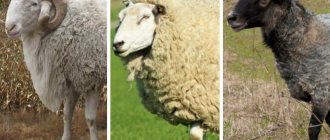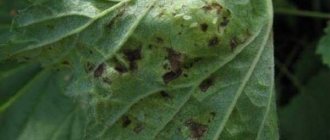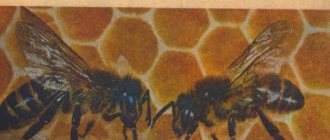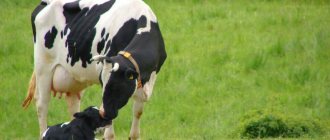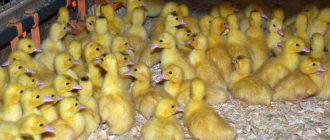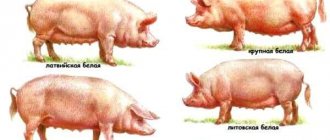Beginning sheep farmers will be very interested to learn about the best odorless breeds of meat sheep, consider the features, and also learn about the pros and cons of the animals. This post discusses the most popular meat breeds, not only in domestic agriculture, but also in neighboring countries.
Important! Meat sheep are unpretentious in keeping, are characterized by good meat yield and a high degree of fertility. In truth, there are a lot of meat breeds, so if you are thinking of breeding them, you just have to decide on the choice.
The best foreign meat sheep breeds
Foreign breeds of sheep are highly productive, but many of them cannot be bred in Russia because they are adapted only to certain living conditions.
Prekos
The Precos, a breed of French origin, is popular and is bred all over the world. Sheep are barrel-shaped, strong, have high immunity, are unpretentious in feeding and bear good fruit. A newborn lamb weighs 5 kilograms, and a four-month-old lamb already weighs 35 kilograms of live weight. An adult male weighs approximately 130 kilograms; when slaughtered, 55 kilograms of meat comes out. Females weigh 65 kilograms at one year of age.
Vendée
Photo of the Vendée sheep breed
An ancient, meat breed of sheep, bred by the French. These animals are unpretentious in terms of feeding and maintenance, and tolerate winters well. Their meat is lean, with a pleasant smell and beautiful, marbled veins. Adult males can reach a weight of 150 kg, queens - 110 kg. Newborn lambs weigh up to 6 kg, but at 4 months they can reach 60 kg. Weight gain is approximately 450 g per day. Slaughter meat yield is 50%. Sheep of this breed, like most other species, are allowed to be slaughtered until they are one year old (ideally 4-6 months).
Barbados black-bellied
A short-haired meat breed that originated in the Caribbean. There is also a horned breed bred in America, it was created by crossing with the Ramboulier breed. The size of the sheep is medium, the bones are strong, and their color is dark red. And males have a mane on their chest and neck, hair length is 12-16 cm. The weight of an adult male is up to 90 kilograms, and females up to 60 kilograms. Lambs are born weighing 3 kilograms; by the age of three months they reach 17 kilograms. Females give birth to three lambs in two years, and the females of this breed have a lot of milk, which ensures a daily weight gain of the lamb of about 250 grams.
Zwartbles
The breed is known all over the world not only for its delicious meat, but also for its softest fleece and vitality. It was developed at the end of the 20th century. A distinctive external quality is a white stripe on the head. Females give up to 3 lambs per lamb. The weight of the newborn is about 3.5 kg. At 120 days, the lamb weighs about 45 kg, gaining 400-600 g daily. An adult ram weighs 130 g, the uterus weighs 100 kg. Slaughter yield of carcass is 50-59%. The meat is very tender, dense, with a sweet taste and pleasant aroma.
Latvian darkhead
Bred in Latvia. They were obtained as a result of 10 years of crossing at the beginning of the 20th century. Oxfordshire, Shropshire and local, aboriginal sheep are involved in the breeding work. The result was the emergence of Latvian dark-headed sheep. This hybridization was aimed at increasing the level of meat productivity.
Representatives of the breed are distinguished by a strong constitution, a deep and wide black chest, which protrudes forward. The limbs, along with the ears and muzzle, are painted black. That is why the name of the breed arose. Weight of animals:
- adult rams – 90-100 kg;
- females – 50-55 kg.
Yarks are characterized by rapid maturation, and the animals themselves grow quite quickly. If a newborn lamb weighs 3-4 kg, then after 9-10 months. life weight reaches 40-45 kg. Of course, obtaining such indicators is possible only if the rules of care, maintenance and feeding of individuals are observed.
Interesting! The quality of meat of the Latvian dark-headed breed improves when mixed with Tsigai sheep.
Texel
Representatives of this breed are one of the leaders among meat-wool sheep. The result of many years of breeding work was a high-quality combination of disease resistance, unpretentiousness with a high yield of clean meat and good wool.
Texels have a strong, proportionally built body with a wide back and a refined loin. Adult males grow up to 90 cm at the withers, sheep - up to 70-75 cm. The maximum weight of a male animal can be 160 kg, the bright ones are much smaller, reaching 70 kg. Newborn lambs weigh from 5 to 7 kg.
Wiltshire horned sheep
England is considered the homeland of the animals, and the breed was most popular in the eighteenth century. Animal heads are decorated with horns. Due to their unpretentiousness to the food supply, sheep can be grazed on almost any pasture.
Animals that have reached ten months of age are selected for mating.
Lamb is in great demand; meat products are distinguished by tenderness, juiciness and lack of fat. Meat yield is 55% after slaughter.
The meat direction in sheep breeding continues to be developed, using Wiltshire breeders for crossing with merino females.
Dorper
This breed appeared in the last century in South Africa, thanks to the crossing of the following breeds: Dorset Horn. Fat-tailed Persian blackheads. Fat-tailed. The Merino breed was also crossed, which gave the sheep a pure white color. Because South Africa has harsh weather conditions, droppers had to survive in extreme cold and with minimal food. Thanks to this, they have developed excellent immunity, resistance to disease, and they can endure the harshest, coldest and snowiest winters. The same applies to summer; droppers can even live for two days without water in the summer. The face of this breed is shortened, so the head appears small and cube-shaped. Although their legs are short, they are strong because they can support their own weight. Males can grow up to 140 kilograms, and females up to 95 kilograms. Lambs gain weight quickly and at the age of three months they already weigh 25 kilograms, and by the age of six months their weight is 70 kilograms.
Buryat sheep and Tien Shan variety
Anyone who needs a “frost-resistant” variety of meat should pay attention to Buubey (Buryat sheep): it’s hard to find a better one in this regard. Such individuals were bred by the Buryat tribes taking into account the harsh climate and limited food supply. Buubey are able to feed on pasture throughout the year, while showing good productive performance. The character is mobile, females are distinguished by a developed maternal instinct. The weight of a male is 100 kg, a female is 60 kg.
The Buryat sheep has thick wool, which makes it possible to classify this variety as a fur-meat breed. The meat has no characteristic odor and tastes good.
Buryat sheep
The Tien Shan variety is more suitable for those who live in mountainous areas with a harsh climate. This is the best meat breed of sheep and rams according to many farmers. The breed is distinguished by excellent early maturity and strong immunity for the offspring. Unfortunately, the hair of sheep and rams is sparse, and it is not enough to produce a large volume of fabrics. Sheep also have a small tail.
Tien Shan variety of sheep
Our best breeds of meat sheep
The main task when breeding meat sheep breeds is to gain weight as quickly as possible so that the animal reaches the required weight. To obtain meat, it is not necessary for the ram to be an adult, since already at one year of age they can gain up to 90% of the weight of a full-fledged individual. Let's take a closer look at several representatives of this species.
Gorky
This breed of sheep has a muscular build. Every day, sheep gain at least 100 grams of weight. If you adhere to the rules of nutrition and provide all the conditions of detention, it is possible to feed a male weighing 120-130 kilograms with a small stature.
With sheep it is a little more difficult, but adult representatives gain up to 80 kg. The yield of meat products is quite high (about 55%), in addition to the meat of the uterus they produce good milk.
Nizhny Novgorod sheep are very similar to their English ancestors - Hampshires. They have a powerful, barrel-shaped body and a wide head on a fleshy neck. They are distinguished by an ermine color - the legs, head and tail are black. Representatives of this breed do not have horns.
North Caucasian
The popular breed is a universal species. It is distinguished by high milk yield and high-quality, dense and soft fleece. The meat yield is somewhat less than that of other representatives of the meat sector.
The weight of adult rams reaches 110 kg, sheep - 60-70 kg. With a height at the withers of about 70 cm, the animals have a wide back and lower back. They have well-defined meat forms - developed muscles of the limbs and hams.
Kuibyshevskys
Another variety of meat breed, which differs from its “brothers” in its strong bone structure. They are grown to obtain meat products in Russia without any special difficulties.
Rams and sheep tolerate sub-zero temperatures well and do not suffer from heat or severe frosts. If you make every effort to feed the lambs, by the age of 5-6 months their weight will be at least 30 kilograms.
Raising sheep for meat production is a profitable business with a stable income. The breeder is faced with the task of monitoring the weight of the lambs and determining when the animal has already reached the required weight standards.
Katumsky
Modern breeding research has made it possible to develop a new breed adapted to life in the humid climate of northwestern Russia. Smooth-haired sheep do not require shearing and are distinguished by accelerated weight gain and high yield of meat product.
Katumskaya lamb has proven itself to be of high taste quality. Due to their early maturity, the sheep are nicknamed broilers; by the age of one and a half years, the lambs reach a weight of 90-95 kg. The weight of adult rams reaches 110-120 kg, sheep - up to 75-80 kg. Animals easily tolerate any cold weather under simple shelters equipped with heated drinking bowls. They are distinguished by a calm, phlegmatic character and the ability to not lose weight with meager food.
Tashlinskaya
Today, this breed is one of the latest results of selective crossing with strict selection of individuals for the most desirable traits. The meat of Tashlin sheep has excellent taste and is comparable to marbled beef.
Representatives of the breed have pronounced meat shapes and a harmonious physique. The average weight of adult rams is about 100-110 kg, sheep - 65-70 kg. Lambs grow quickly and gain up to 230 g of weight per day. In the best representatives of the breed, by the age of 3 months, the weight reaches 38-45 kg, and the daily gain is 350-400 grams.
West Siberian
This breed of sheep was bred in the North Caucasus. An interesting fact is that these sheep have no analogues, since scientists spent 18 years to create a West Siberian breed of sheep, and English scientists also helped them in this. This breed was created by crossing Kuban rams and Siberian sheep. The main difference from other breeds is that they can produce more meat than other sheep breeds.
From one individual you can get 50% meat, when in other breeds this figure drops to 40%. Another feature they have compared to others is their high fertility. Already five-month-old lambs will weigh 40 kilograms, an adult male 120 kilograms, and a female 70 kilograms.
Wiltshire Horned and Barbados Black-bellied Sheep
Wiltshire Horned is not the most famous variety in Russia, but this British breed has an impressive size. The characteristics of animals are such that, regardless of gender, both sheep and rams grow small horns. Compared to others, this variety does not have good fertility. Animals weigh up to 140 kg, males, females a little less - 90 kg.
Wiltshire horned
The Barbados black-bellied sheep is a relatively medium-sized animal for meat production (males reach 90 kg, females - 60 kg). An undoubted advantage of sheep and rams is dietary meat without lanolin. The breed's fertility is quite high.
Barbados black-bellied sheep
The best breeds of the near abroad
Selection work is also carried out in neighboring countries. There are also breeds that are distinguished by high rates of meat productivity. However, if the use of fat-tailed sheep was typical for Central Asian countries, then in Eastern Europe meat-wool sheep are popular.
Saradzhinskaya
The cattle themselves are white, and the legs and head are red; there are also dark sheep. The cattle are large, the bones are heavy, and the body itself is short. Males have small, rounded, hard horns. Adult males weigh up to 90 kilograms, and females weigh up to 75 kilograms of live weight. The weight of newly born lambs is about 4.5 kilograms; by the age of four months their weight reaches 40 kilograms. Sheep of the Sarajin breed have lard, tender meat and wool, with which professionals make carpets.
Tajik
The breed was developed in Tajikistan by crossing the Saradzhin breed of males and the Gissar breed of females in 1963. Individuals are large, have hard, developed paws and a large build. The wool is like a braid, having good density, shine and strength. An adult male grows up to 150 kilograms, and a female up to 120 kilograms of live weight. Lambs are born weighing 4 kilograms, and by the age of five months their weight is already 40 kilograms.
Gissarskaya
This is the largest breed in the world, it is also considered one of the best in meat production. Animals are characterized by excellent endurance and intensive weight gain. The weight of an adult male reaches 140 kg, and that of a female – 80 kg with a height at the withers of 85 cm and 80 cm, respectively. In this case, the total fat yield is about 45 kg. At the same time, cases with larger individuals were also recorded - 190 kg in rams and 120 kg in sheep.
Representatives of the Gissar breed are bred in Central Asia. The animals are distinguished by a large head with a hook-nosed profile, as well as a short neck. They have a powerful build with large bones. Therefore, herds are able to make difficult and long journeys of up to 500 kg in order to find new pasture. In addition, long, dry limbs contribute to this.
Despite this physical activity, the average daily weight gain remains at the highest level, reaching 0.6 kg. Even with a low level of offspring, excellent weight gain compensates for this disadvantage.
Edilbaevskaya
This is also a meat breed, which was bred quite a long time ago - in the 19th century. on the territory of Kazakhstan. The characteristics of these sheep are due to the harsh climatic conditions of this region. With a high level of meat productivity, Elbaev sheep can be kept in pasture conditions, when there is limited, meager feed available, and the climate is characterized by sharp temperature fluctuations.
Edilbaevsky sheep are meat-producing sheep. At the same time, the weight of rams can reach 120 kg. Females are 2 times smaller - only 60-70 kg. However, larger individuals are also found:
- male – 160 kg;
- female – 120 kg.
Within 4 months. Lambs can accumulate about 45 kg of weight.
These animals are unpretentious and adapt well to a nomadic lifestyle. Thanks to their endurance and adaptability, they easily survive sudden temperature changes. Edilbaevsky sheep are actively bred in the Krasnodar Territory, Tatarstan and Bashkiria, as well as on sheep farms in the Saratov and Orenburg regions.
Jaidara
Sheep are kept for fat and meat; jaidars have coarse wool. The constitution of sheep is large, the legs are short, and the body is elongated. An adult male weighs 110 kilograms, and a female weighs 60 kilograms of live weight. Newborn lambs are born weighing 3.5-4 kilograms, and by the age of four months they reach 45 kilograms.
Kalmytskaya
Sheep of the Kalmyk breed are tall, have large bones, well-developed muscles, and coarse wool. Sheep are on pastures all year round, so they are distinguished by their endurance and activity. The meat of this breed is valued only among young animals, since as it matures, the meat acquires a greasy smell and taste. An adult male weighs about 100 kilograms, and a female 75 kilograms. By the age of four months, a lamb weighs 40 kilograms.
.
Tien Shan
When selecting the breed, the goal was to adapt the animals to the harsh climate of mountain pastures. Animals have a strong constitution - a voluminous chest, a straight and wide back, a sacrum, and a lower back. They are distinguished by good health and a high level of immunity.
With an average weight category of 100-110 kg, an adult ram can reach a weight of 140-150 kg, a sheep - 100 kg. The breed is distinguished by its high precocity, a 4-month lamb reaches a weight of 28-30 kg, and a one-year-old lamb weighs more than 50 kg. The meat pulp content in carcasses reaches 80 (or more)%, while lamb has excellent taste. A characteristic feature of the breed is the combination of meat productivity with high wool clippings.
About the Romanov breed of sheep.
Romney March
Sheep of the Romney Marsh (Kuibyshev) breed have an impressive physique and, characteristic of individuals of this breed, a wide, polled head, long torso, wide loin and sacrum, and strong legs. The meaty forms of the Romney March are visible to the naked eye. Rams of the Kuibyshev breed can weigh up to 95-100 kg, and ewes - 60-65 kg.
The weight of four-month-old lambs reaches 30-32 kg, their early maturity allows them to quickly justify the cost of feed. Romney Marsh sheep quickly adapt to all climatic conditions and feel equally good in both heat and cold. Breeding of this breed is popular on farms in the Volga region - in the Ulyanovsk, Samara regions, Tatarstan and Mordovia.
Dairy sheep breeds
Theoretically, you can get milk from any sheep. But, of course, milk productivity depends on the breed, age, feeding and housing conditions, as well as the duration of the lactation period.
In Russia, dairy sheep farming is mainly focused on animals of the Karakul, Tushino, Mazekh, Balbas, and Tsigai breeds. Fine-fleece, semi-fine-fleece, and Romanov sheep are usually not milked.
Cattle breeding practically does not contain sheep flocks for purely dairy purposes. This product is in some way a "by-product". In addition to it, the skins (smushki) of newborn lambs are very valuable. However, after the separation of offspring, ewes of these breeds do not stop producing milk, and the product is used in the manufacture of cheese and other dairy products.
Lakayune (lacaune)
Work on the selection of these animals was carried out in France. The bred breed has good immunity and high resistance to diseases. They are kept mainly in the purely dairy direction of sheep breeding; lamb meat is used less often. The meat product of adult sheep does not have decent taste, and the wool shearing is much smaller than that of other types of sheep.
| Characteristic | Indicators |
| Weight (male/female), kg | 80–100/60–75 |
| Torso | Big |
| Wool | Short, often sparse. The lower abdomen has little hair or is bare, which makes milking easier. The head, back of the head, and neck are also often without hair. |
During lactation (about 150 days), Lakayune ewes produce 350-400 liters of very high-quality milk with high fat content (8-9%) and protein content - up to 5.5%. Sheep easily adapt to any climate zone, be it rocks poor in vegetation or fertile meadows.
Askaniyskaya
These sheep were obtained by Ukrainian breeders. The Askanian was recognized as the largest fine-fleece merino. At the same time, the productivity of the lactating queen is about 135 liters per season.
Reference. Merinos are fine-wool sheep that produce soft wool with fibers of 15–25 microns.
| Characteristics | Indicators |
| Height at withers | Females up to 70 cm high |
| Weight, kg (male/female) | 110–150/58–120 |
| Wool | White, equalized, high-density, medium-thick, staple fleece. Fiber length - 7.5–10 cm |
100 queens produce up to 150 lambs per year. Askanians are often crossed with other breeds, since they transmit breeding properties well to the offspring, which improves the performance of other lines. The wool shearing of females reaches 8 kg, the quality of the wool is rated at least class 64. The result of males is 19 kg, minimum class 60. The final fiber yield is 45%.
Experts highly appreciate the nutritional properties of lamb meat, which is characterized by low fat content and lacks a specific odor. Disadvantages include poor curling of the coat.
Tsigaiskaya
Representatives of the oldest branch of sheep, originally from Asia Minor, are distributed throughout the world as one of the most versatile breeds. The flocks are kept in the meat, wool and dairy areas of sheep breeding. Animals are characterized by endurance and resistance to disease.
| Properties | Values |
| Weight (male/female), kg | 75–100/40–60 |
| Torso | Compact, barrel-shaped, medium in length, with wide withers and rump |
| Head | Small size, dry |
| Breast | Deep, large width |
| Back | Straight |
| Tail | 18–23 vertebrae, thin |
| Limbs | Properly positioned, strong |
| Wool | Homogeneous, thick, almost does not fall off, with a strong core |
The average weight of adult rams is about 70-80 kg, sheep - 45 kg. Ewes are very fertile - 125-145 lambs are born per 100 individuals. At 2-3 months of age, the offspring are separated from the queens and milking of the sheep begins. Yarki have good milk production - during 4 months of lactation they produce up to 140 liters of full-fat (7-8%) milk.
Awassi
The ancient branch of rams from Syria is distinguished by excellent health and good immunity to various diseases. Animals are not demanding when it comes to food and care. They have good endurance in arid climates and the ability to accumulate liquid in the fat tail. Adult sheep can drink no more than 2 times a week.
Awassis have the highest milk yield among dairy sheep. The product yield per lactation from one individual can range from 350 to 700 liters. high-fat milk (8-10%), which has rich taste. From 100 l. product can produce about 40 kg of high-quality cheese.
Karakulskaya
The ancient breed from Central Asia is extremely popular worldwide. Sheep are used in all areas - wool, meat and dairy. The main difference of this breed is the rare quality of the smushka - light gray, steel, milky, pearl and even black.
Animals are well adapted to hot climates. They have a dry constitution, endurance and undemanding food requirements. Fertile females are characterized by multiple births and high milk yield. Sheep are relatively small in size. The average weight of lambs is 40-46 kg, the weight of adult rams is 70-75 kg. During the lactation period, the queens milk an average of 260-300 liters of fatty milk.
East Frisian
These sheep are of German origin and are highly valued among cattle breeders. The breed is universal and has one of the highest indicators in meat, milk and wool productivity. In addition, females are very fertile.
The animals are large, a sheep weighs on average 65-85 kg. During lactation, milk yield from one individual brings from 400 to 550 liters of milk, per day - about 5 liters. The resulting product has good fat content (6-8%) and protein content (above 5%). This breed is very whimsical; it requires careful care with good grazing and good-quality feed. Usually kept alone.
Balbasskaya
The sheep are bred through centuries of selective breeding and are designed for high mountain areas. The flocks are kept in the territories of the Middle Transcaucasus (Armenia, Azerbaijan). Balbass are very hardy and have a strong, muscular physique, as they graze in the highlands almost all year round and travel long distances in search of green grazing.
The average weight of an adult male is about 90-95 kg (maximum - 115 kg), a sheep - 65-70 kg. The queens are fertile; 115-125 lambs are born per 100 individuals. By the age of 4 months, the offspring gains weight of about 25 kg. Milk productivity volumes are 125-135 liters. for lactation.
Feeding diet for sheep with milk production
It is worth considering that when breeding sheep for milk, the technology for raising them must be more intensive. Animals become depleted much faster and require special feeding and housing conditions.
Milk productivity depends to the greatest extent on the length of time the lambs are kept under the uterus. In our country, most of the commercial milk comes from Karakul sheep, since their lambs are killed in the first days of life to obtain skins.
If the lambs are kept at suckling for 1-3 days, and then transferred to a sheep milk replacer, the queens can be milked throughout the entire lactation period (4-5 months). Moreover, for the first 2 months milking can be done twice a day, and then once.
When lambs are kept under the uterus until 3 months of age, after weaning the ewes, they are milked for 1.5-2 months. In this case, the queens and lambs must be fed.
The largest amount of milk per day in sheep occurs in the second decade after lambing. Milk yield increases until the fifth lactation and then decreases. At the end of lactation, milk yield decreases to 100-200 g per day.
Before preparing ewes for mating, milking and suckling of lambs should be stopped 2-3 months in advance.
General characteristic qualities
Animals belonging to meat breeds are characterized by a process of rapid increase in weight indicators. Thus, already upon reaching 4 months, lambs can account for up to half the weight of an adult. Moreover, in average values, the weight gain will be about 300 g. Although this parameter is greatly influenced by the method and conditions of keeping the livestock. Upon reaching 1 year of age, the standard weight is already fixed. It is equal to 80-90% of the weight characteristics of an average adult individual.
Meat breeds are heterogeneous in their composition. Experts identify a number of conditional subgroups. For example, we can talk about the following two key options:
- Meat (fat tail) subgroup. Sheep of these breeds are bred in the arid climate of Asian regions. This subgroup is represented by typical Gissar and Edilbaevsky individuals.
- Meat and wool subgroup. This direction is actively developing in Russia. These include Romanovskaya, Gorky, Kuibyshevskaya, etc.
The breeds under consideration, despite the relatively higher level of meat productivity, have their differences, unlike other breeds. However, they also have many similar features:
- a fairly strong body type, characterized by well-developed muscles;
- characteristic thin-looking bone structure combined with smaller internal organs;
- dense and thick subcutaneous layer of fatty tissue with a thin structure of the skin;
- increased yield of meat products;
- high level of fertility with rapid maturation of animals;
- unpretentiousness in care and choice of diet, while maintaining pasture conditions is acceptable throughout the year;
- excellent immunity, resistance to the action of many pathogens;
- endurance in life;
- the ability to accumulate subcutaneous fat throughout the year.
Sheep from almost all areas of use are characterized by high milk yield parameters. This fully applies to meat breeds. At the same time, suckling lambs develop and grow quickly, which is combined with low mortality rates of young individuals.
Dairy and meat breeds of sheep
Let's consider dairy and meat breeds.
Romanovskys
The breed was developed in Russia and has become popular due to its fertile characteristics. One ewe can bear about 5 lambs. She gives birth at least 2-3 times a year.
| Characteristics | Indicators |
| Backbone | Developed |
| Head | Oblong, hooked nose, erect ears |
| Torso | Rounded, barrel-shaped |
| Tail | Short |
| Legs | Straight, placed at a great distance |
| Back | Wide, straight |
| Breast | deep |
| Weight, kg (male/female) | 65–100/45–90 |
| Wool | The coat is thick, with an abundance of fluff. Forms braids with curls. From the 9th month the mane develops and is sharply separated from the rest of the fleece. In newborns, the fur is black, but by 5 months it loses its dark pigment |
Sheep, unlike rams, weigh much less. In addition to the ability to use the animal as meat products, they are also a source of milk. You can actually get about a liter of fatty dairy product per day, which is valued for its beneficial properties.
East Friesian breed
The origin of representatives of this breed occurred in Holland in the 19th century. Reproduction began at the end of the 20th century. throughout the European part of the country. The main difference between the species is considered to be the presence of a thin long tail on which there is no hair. The breed is large and has a developed musculoskeletal system.
| Characteristic | Indicators |
| Height (male/female), cm | Up to 90/70 |
| Weight (male/female), kg | Up to 120/100 |
| Head | Oblong |
| Profile | Curved, Roman |
| Ears | Long length, slightly protruding forward |
| Sternum | Deep, wide, with developed ribs |
| Torso | Dense, cylindrical, saggy croup |
| Back | Wide, straight |
| Limbs | Correctly positioned, thin |
| Wool | White, up to 10 cm. Absent on nose, eyes, limbs, tail |
Character traits:
- A ram grows up to 0.9 m, and a sheep – up to 0.7 m.
- The total weight of a male reaches 90-120 kg, of a mature sheep up to 70-100 kg.
- The head has an elongated shape.
- The body resembles a cylinder shape, strong, with a long croup. The outline of the body is curved.
- The tail is bare and thin.
- The breed is distinguished by forward-facing ears
- Coat length is 5-10 cm.
Basic indicators:
- This species is considered universal because it is grown for meat and dairy products, as well as wool.
- The breed boasts high milk yields, unlike other species. During the period of milk production, the animal brings from 400 to 600 liters of product. The concentration of fat and protein in it reaches 7.5%.
- High fertility of up to 220% is noted. Sheep give birth to 2-3 lambs.
- Increased precocity - mating is carried out already at 11 months of age. In a month, a lamb can gain weight up to 300 g, and with proper nutrition - up to 500 g per day.
Assaf
Assaf is a dairy and meat breed obtained by Israeli breeders in 1955 by crossing Ostfries and Awassies. And now in Israel it is bred almost more often than others; it is also in demand in Europe and the USA. The productivity of the Assafs is quite high. During the season, milk yield per adult is up to 450 liters of milk. In two years, 3 lambs are born, the first lambing is possible at 14 months. The wool of these sheep is coarse.
Texel
The Dutch Texel breed is very famous among sheep farmers. It began its existence in Roman times and was formed only in the 18th century. Unlike other breeds, the Texel loves to graze with other animals separately from its herd. The height of rams is 63-83 cm at the withers with a weight of 90-140 kg, for sheep - 58-75 cm with a weight of 65-125 kg. The weight of a newborn lamb is 4-7 kg, at the age of 4 months - 36-60 kg.
Texel can be safely called a typical meat breed: carcasses of any age have a large amount of muscle tissue and have good slaughter weight. Tender marbled meat cooks quickly and does not have an unpleasant fatty aftertaste. The effect is achieved due to its qualities - special texture and juiciness. The breed is very hardy, adapted to living in the fresh air, resistant to weather changes and diseases, and adapts well to any food.
All of these breeds have high meat productivity of sheep. As a rule, such species are perfectly adapted to year-round grazing in any climatic conditions. With proper feeding, meat animals create large reserves of fat, which are used to maintain life in the winter, when pastures are covered with snow and ice, and in the summer during droughts during grass burning and water shortages.
Share
Breeds of sheep for meat and fat production
In another way, these sheep are called fat-tailed. They can be easily distinguished from the others by their large fat sac in the sacrum area. The homelands of meat and fat animals are countries with very difficult climatic conditions, for example, states such as Tajikistan and Afghanistan. Dry climatic conditions and the virtual absence of traditional pasture lands are the reason for the characteristics of these types of sheep.
The main feature of fat-tailed animals is their very large size (representatives of this species are the largest among all types of sheep). Their second important feature is the excellent adaptability of these animals to almost any vagaries of weather. Well, the third feature is their unpretentiousness in feeding. At their core, fat-tailed sheep are somewhat reminiscent of camels. In addition to fat, the fat tails of these sheep contain a large amount of various nutrients, which allows these animals (like camels) to go without water or food for two or three days.
In addition, they have high immunity to infectious diseases and can feed on open pastures year-round.
The main disadvantages of such animals include their low level of fertility. It is extremely rare for a litter of fat-tailed sheep to have more than one lamb. Another disadvantage of fat-tailed sheep is the low quality of their wool, which is practically not sold.
The most famous breeds of meat and fat sheep breeding include: Jaidara, Edilbaevskaya and Gissar.
The live weight of an adult fat-tailed male ranges from 110 to 190 kilograms. The females of this breed, although they look much more modest than the males, still reach a weight of 75 to 90 kg. The weight of fat found in the fat tail of these animals can reach up to 14 kg.
What is responsible for the rapid growth of meat in rams?
Lambs rapidly gain weight even with minimal feeding costs. On pasture they can gain an average of 300 g per day. This allows the young sheep to gain 80% of the body weight of an adult by the age of one year.
To get the highest quality lamb with the best taste, you need to cut a one-year-old lamb. Not all breeders agree on the slaughter age. Yablonovsky M.Yu. I am convinced that slaughter “...should be done at the age of 7-8 months, when the ram reaches 40-45 kg.”
But in order for him to gain the required weight, he must be kept in suitable conditions and eat properly. Even if feeding lambs does not cause much trouble, conditions must be observed.
To gain weight you need the following:
- Correct diet. A young lamb should consume sufficient amounts of nutrients, vitamins and mineral supplements.
- Providing the necessary conditions of detention. Thanks to care, animals avoid the risk of disease and loss of appetite.
- Timely veterinary care.
- Castration of animals raised for slaughter. Castration of a young male is performed at 6 months.
Purposes of castration:
- it allows you to improve the quality of meat, since the meat of an uncastrated male has an unpleasant odor and a pungent taste;
- it speeds up the process of gaining body weight in the female (castrated male), and also allows you to get by with less expensive feed and supplements;
- absence of fights between castrated individuals;
- casted males are kept with ewes without risk, so farmers do not incur the costs of separate housing.
The best breeds of wool and meat-wool sheep
Wool sheep are raised to produce high-quality wool, which is used in the production of wool and blended fabrics. In addition, these domestic animals have good meat qualities and, as a rule, they are kept for double meat-hair production.
Soviet merino
Rams were bred at the beginning of the 20th century from Merino sheep from the territories of Ukraine and the North Caucasus. These sheep are distinguished by their strong constitution, weight and high yield of wool product. They are well adapted to cold climates with long and frosty winters. Sheep can easily spend the night on bare snow without any damage to their health.
The average weight of an adult ram is about 80 kg, and that of a sheep is 45-50 kg. Queens have average fertility - 120-130 lambs per 100 individuals. Each year, 9-11 kg of high-quality wool is obtained from one breeding ram, and about 6 kg from a sheep. The animals are long-haired (10-12 cm), the color range of the fleece is represented by shades of white, gray, and beige.
Romanovskaya
The breed is the pride of domestic selection and is the best in terms of fur quality and fertility. Selection was carried out in the northern Volga region based on the selection and improvement of the food supply of local coarse-wool sheep. Currently they are being bred in the Arkhangelsk, Vologda, Yaroslavl and Ivanovo regions
The average weight of rams is 75 kg, sheep - 50 kg. The fur of these animals consists of black, short hair and white soft down. Sheepskins are famous for their durable flesh and fluffy, non-matting fur. The annual wool harvest is relatively small - about 4.5 kg per individual.
Groznenskaya
The selection of the fine-fleece breed began in the 20s of the last century in Dagestan by crossing Australian merino sheep with local breeds. The valuable breeding and productive qualities of rams ensure high shearing and fleece quality. Animal hair has a high percentage of grease, which allows the fur to remain clean and not mat.
Sheep are of medium size, the weight of a ram can reach 90-95 kg, of a sheep - 45-50 kg. The length of high quality wool fibers is 9-11 cm, white fur is soft and thick. The annual clip from one male is 17-18 kg, from a sheep – 8-9 kg.
Caucasian
Animal selection was carried out in the Stavropol and Rostov regions. To breed Caucasians, selected bright local breeds were crossed with pedigree American Ramboulier rams. Today, these fine-fleeced sheep are used in crossing with coarse-wooled dams to produce finer fleece.
The animals belong to the medium weight category. The weight of rams is approximately 90-100 kg, sheep - 50-60 kg. Coat productivity, color shades and hair length have brought the breed to one of the first places in its category. The average annual clip from a ram is 10-13 kg, from a sheep – 5-7 kg. The yield of pure wool reaches 40%.
Lincoln
The homeland of these sheep is the English county of Lincoln, rich in year-round pastures. Long-haired meat animals have high productivity of very high quality wool and lamb. In Russia, purebred sheep are bred in the Kuban (Kuban Lincoln) and the best males are often used to improve other coarse-wooled breeds.
Sheep are large-sized, the live weight of a ram can exceed 140 kg, and that of a sheep - 90 kg. Wool fiber is characterized by good strength, crimp and strong luster shine. The annual wool yield from an adult male is 10 kg or more, females produce a little less - 6-7 kg. The length of lamb “curls” reaches 35-40 cm.
Altai
The breed was bred in the 30-40s of the 20th century by pedigree breeders in Siberia by crossing local Merinos with Rambouliers, Australian Merinos and Caucasians. Altai sheep have a strong constitution and are perfectly adapted to the climate of the harsh region - severe frosts and summer heat. They are also very disease resistant.
Animals are not the largest in size. Rams reach an average weight of 110 kg, sheep - 60-65 kg. Wool fiber is of high quality and is used in the manufacture of expensive fabrics. The average annual clip from one ram is about 11-13 kg, from a sheep – 6-7 kg. In some flocks they reach 26 and 10 kg, respectively. Purebred ewes are very fertile, producing 130-160 lambs per 100 individuals.
Zwartbles
The Dutch breed of Zwartbles sheep began its history in the 20s of the twentieth century. Adult rams reach 85-95 cm at the withers and weigh 90-130 kg; the ewes, with a height of 75-82 cm, reach a weight of 75-100 kg. Lambs are born weighing 4-5.5 kg, twins of three or more weigh 2.5-3.5 kg. Babies gain 400-600 grams every day, thanks to the high milk production of sheep, and by 4 months they can weigh 32-45 kg each. Lean meat from animals of the Zvartbles breed has a sweetish, delicate taste and a mild aroma. Due to their particularly thick coat, individuals can easily withstand extreme cold, wind and dampness.
